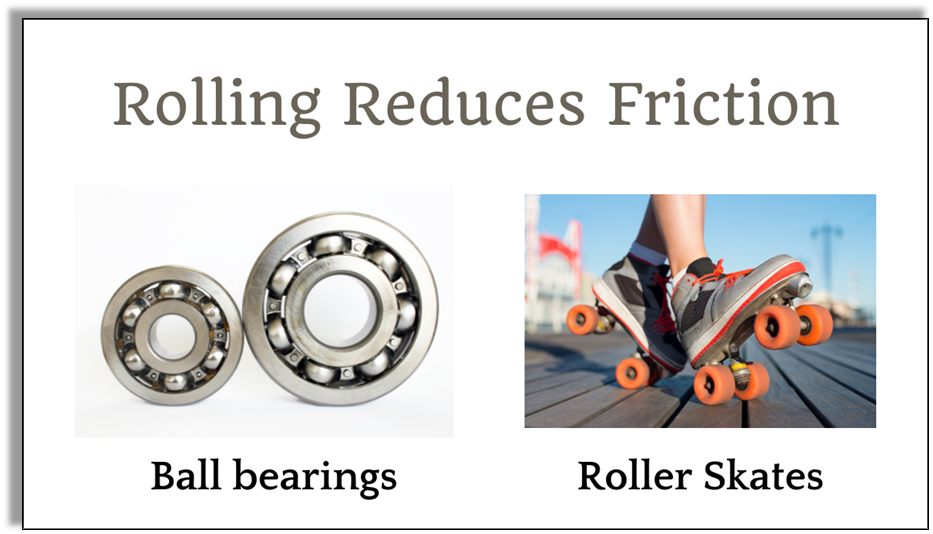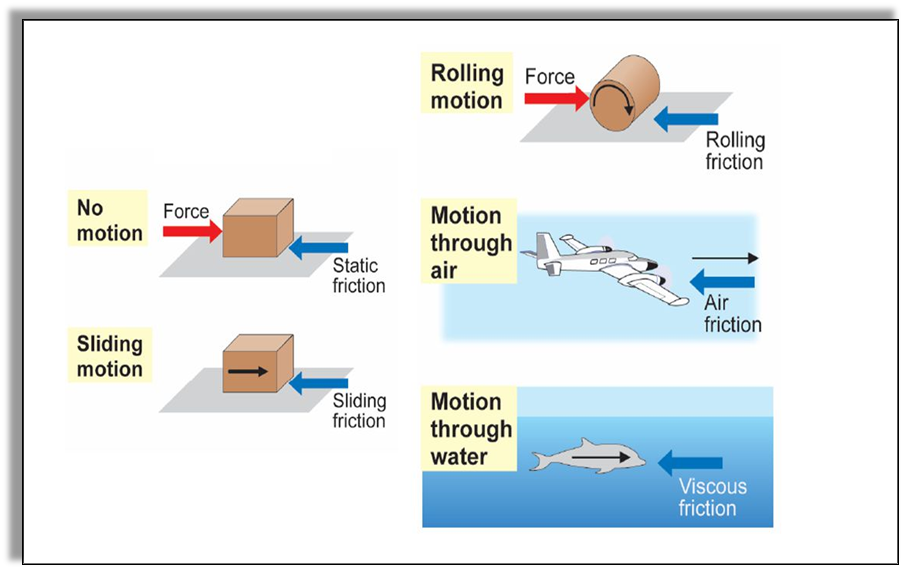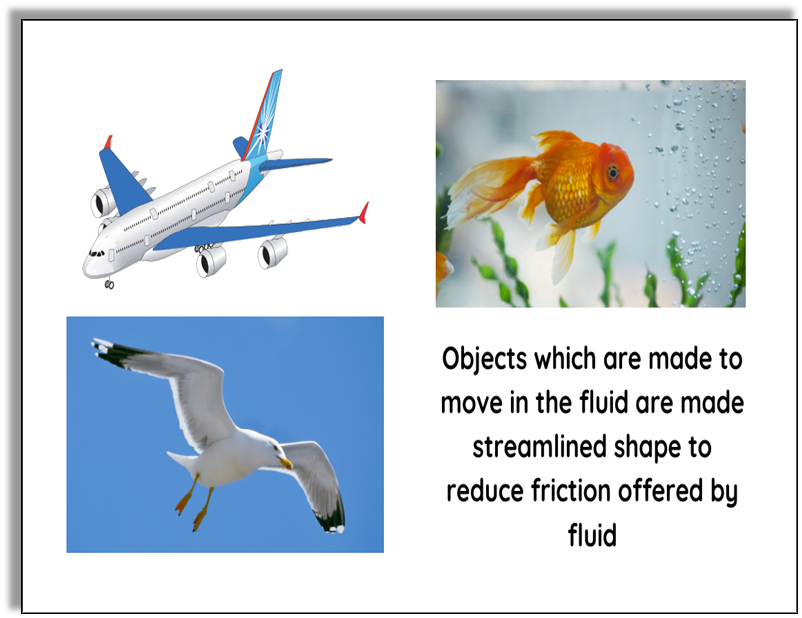- Books Name
- Class-8 Science Book
- Publication
- PathSet Publications
- Course
- CBSE Class 8
- Subject
- Science
Types of Friction
There are four types of friction namely
1. Static friction
2. Rolling friction
3. Sliding friction
4. Fluid friction
1. Static friction
- The word static means at rest.
- Static friction can be defined as the friction that acts when we try to move an object at rest or the object which is not moving. It is the strongest type of friction.
- For example –
- Cup placed on a table
- Scenery hanging on a wall
- A car parked on a hill.
- Limiting friction is the friction acting on a body when it is about to start moving.
2. Sliding friction
- Sliding friction is smaller than static friction as a smaller force is now required to keep the object moving.
- Sliding friction can be defined as the friction that acts when two surfaces slide over each other.
- If the applied force exceeds the limiting friction the irregularities on it do not get interlocked on the surface on which it is moving.
3. Rolling friction
- Rolling friction is always less than sliding friction as rolling reduces friction. Rolling friction is the weakest type of friction.
- Rolling friction can be defined as the force that opposes the motion when an object rolls over another object.
For example –
- Ball bearings
- Skateboards

4. Fluid Friction
- The above three friction occur between solid surfaces whereas fluid friction occurs in fluids, that is in liquids or gases. A fluid is a substance that can flow and take the shape of a container.
- Fluid friction can be defined as the friction that occurs when objects move across fluids. Another name for fluid friction is drag. It resists the movement of viscous fluids relative to each other.
- The force exerted by fluids is called drag. Drag force acts in a direction opposite to the direction of motion of the object. For example - When an airplane moves at a high speed it experienced air resistance.
- Fluid friction depends on the following factors
- Speed of the object for the fluid.
- The shape of the object.
- Size of the object.
- Nature of the fluid.

Advantages of Frictional Force
- The frictional force is necessary for various purposes in our daily lives such as:
- It allows us to walk on the earth's surface.
- It allows us to write with a pen on a surface or a paper.
- It allows us to fix a nail in the wall.
- A moving object would never be able to come to a state of rest without the Frictional force.
- It would not be possible to drive any automobiles on the road without the Friction force.
- It would not be possible to construct any buildings without the Frictional force.
Interactive
Disadvantages of Frictional Force
- Frictional force results in wear and tear of objects such as the moving parts of a machine, the tyres of a vehicle, the sole of the shoes, etc.
- It also results in the production of heat. In the case of machines, the production of heat leads to the wastage of energy.
- The Frictional force also leads to a decrease in the speed of a moving object or sometimes stops it.
- It can lead to noise pollution in certain cases. For instance, aircraft produce loud sounds due to the resistance of the air.
Interactive
Ways to Reduce Fluid Friction
- Firstly the question arises that why there is a need to reduce fluid friction.
- As when objects move through fluids, they lose some of their energy in overcoming the fluid friction which decreases the efficiency of an object. To overcome this there is a need to reduce fluid friction.
- Fluid friction can be reduced by molding the shape of an object which offers little resistance to fluids. The streamlined shape is best suited for objects that move in air or water. The streamlined shape is like a thin wedge that cut the air or water and moves forwards.
- For example – An airplane has a special shape called streamlined shape to reduce friction offered by air. Similarly, boats, birds and fishes have this special and suitable shape to reduce fluid friction and avoid loss of energy.


 PathSet Publications
PathSet Publications
